How to buy Migraine Relief Drugs without prescription in 2024?
Migraine treatment
Migraine is a specific type of headache. There are around 200 different types of headache. After tension headaches, which more than half of Germans suffer from occasionally, migraines are the second most common form of headache. It is estimated that 38 percent of the German population suffer from them. The exact causes of migraines are still the subject of medical research.
Start an online consultation and complete a simple health questionnaire. Then select your preferred medication from the list of recommended treatment options. The treating doctor will check your answers and issue your prescription online if there are no queries. Our service will take care of shipping the medication immediately so that you receive it the very next working day.
The World Health Organization ranks migraine as the most common disabling long-term neurological condition when years of life lost to disability are added together.
If you suffer from migraines, we don't have to tell you how much the pain affects your daily life. In order to reduce the frequency of migraine attacks and relieve the excruciating pain as quickly as possible, migraine treatment with medication is usually essential. A distinction is made between acute and prophylactic treatment of migraines.
Non-prescription painkillers from the group of non-steroidal anti-inflammatory drugs (NSAIDs) are usually used to treat a mild acute migraine attack. Active ingredients such as acetylsalicylic acid or ibuprofen are considered to be effective and can also alleviate any accompanying symptoms such as nausea, sensitivity to light and noise. If these medications are not sufficient, triptans are suitable for treating acute symptoms of moderate to severe intensity.
If migraine attacks occur frequently, medication can be taken to prevent them. However, the most commonly used drugs for migraine prophylaxis require a prescription. The use of these drugs is intended to reduce both the frequency and intensity of migraine attacks.
The beta-blockers metoprolol and propranolol are mainly used here. If these do not produce the desired result, the doctor can also prescribe suitable migraine treatments such as topiramate, a drug used to treat epilepsy, with restrictions. Certain antidepressants and antibodies are also conceivable treatment options for migraine prophylaxis.
How are migraines treated?
Migraine treatment involves two approaches: relieving acute symptoms during an attack and preventive measures to reduce the intensity and frequency of migraine attacks. Painkillers (NSAIDs) or triptans are usually used to stop an acute attack. In addition, sufferers should be able to rest in a quiet, darkened room.While over-the-counter medication is often used for acute relief, prevention is mainly carried out with prescription medication. Certain beta-blockers, antiepileptic drugs, antidepressants and antibodies are particularly suitable here.
Preventive treatments for migraines
Migraine attacks can be prevented by regularly taking certain medications. However, as the use of medication is always associated with potential risks and side effects, the doctor will only prescribe this medication if certain conditions are met - at least in part:
- The migraine leads to a particularly high level of suffering
- The sufferer's quality of life is severely restricted
- Taking medication for relief on more than 15 days a month
- Use of triptans or combination preparations on more than ten days per month
- More than three migraine attacks of at least moderate severity per month
- Regular migraine attacks lasting more than 72 hours
- The sufferer does not tolerate acute treatment medication
- Medication for relief does not work sufficiently
- The number of migraine attacks increases dramatically
Unfortunately, migraines cannot be completely eliminated even with prophylactic medication. However, the number of attacks is usually halved on average and the quality of life of those affected increases considerably.
Long-term use of NSAIDs is not recommended due to the risks and side effects. As a first-line treatment, doctors often prescribe a drug that was originally intended for the treatment of other illnesses. For example, the beta-blockers metoprolol and propranolol are often used for migraine prophylaxis. They are intended to calm the nervous system. This protects the brain from overstimulation and thus prevents a migraine attack.The active ingredient topiramate, on the other hand, is considered suitable - with restrictions. It is mainly used when beta blockers have not had the desired effect. Topiramate was originally developed for the treatment of epilepsy. Antidepressants from the group of serotonin reuptake inhibitors are also frequently prescribed for the preventive treatment of migraines. In addition to influencing the serotonin metabolism, which is an important factor in the development of migraines, antidepressants also reduce stress and emotional states that can trigger a migraine attack.
For preventive migraine treatment without medication, however, lifestyle changes play a major role. Foods that trigger migraines in those affected should be strictly avoided. You should also give up migraine-triggering habits such as smoking, alcohol consumption or irregular sleeping times. To avoid physical and emotional stress, we recommend making sure you get enough sleep and rest.
Migraine symptoms: Treatment of acute symptoms
As there are different forms of migraine, the symptoms can be varied and sometimes unspecific. In most cases, however, the main symptom is a severe one-sided pulsating headache. It is often accompanied by migraine symptoms such as nausea, vomiting or sensitivity to light and noise. In some cases, it is preceded by a migraine aura, which is often accompanied by visual or sensory disturbances.
While there is currently no specific treatment for migraine aura, the other migraine symptoms of headache, nausea, vomiting and sensitivity to light and noise can largely be alleviated. Both NSAIDs and triptans can reduce the pain and accompanying symptoms. Painkillers work fastest in liquid form. Sometimes they are also combined with caffeine for a stronger effect. However, it should be noted that this also increases the risk of adverse effects.
Are you one of those who suffer from very severe nausea during a migraine attack? Then you may be prescribed metoclopramide. The anti-nausea medication should be taken 15 to 30 minutes before the painkiller. In this way, metoclopramide also improves the absorption of the migraine medication.
What types of migraine are there?
Experts distinguish between a total of ten types of migraine:
- Migraine without aura
- Migraine with aura
- Aura without headache (migraine sans migraine)
- Vestibular migraine (dizziness and balance disorders in the foreground)
- Hemiplegic migraine (subtype of migraine with aura, movement restrictions)
- Basilar migraine (subtype of migraine with aura including pain in the back of the head)
- Migraine of the eyes
- Menstrual migraine
- Chronic migraine (migraine on at least 15 days a month)
- Abdominal migraine (mostly children with pain in the navel area)
Most sufferers have a classic migraine without aura or a migraine with aura. The other forms occur rather rarely or form a subtype of these two forms of migraine. In the case of migraine with aura, treatment is often identical to the treatment of a classic migraine. As the aura itself usually disappears on its own within a few minutes, the focus here is also on treating the headache and accompanying symptoms that follow.Most medications work better the earlier they are taken. In the case of a migraine with aura, treatment can begin early in the aura phase and the pain can thus be relieved as quickly as possible.
Migraine without aura
Moderate to severe headache attacks occur without further warning. Usually one-sided, the pain is perceived as pulsating and drilling. This pain also occurs in different parts of the head and alternates. The pain phase usually lasts from four hours to three days. It can be accompanied by symptoms such as nausea, vomiting, diarrhea and heightened perceptual sensations (sounds, light, smells).
Migraine with aura (Migraine Accompagnee)
The aura, i.e. the neurological symptoms before a pain attack, lasts from five minutes to an hour. There are also forms with a prolonged aura. This aura phase can then last for several days. The aura consists of neurological symptoms, for example visual disturbances, speech disorders and sensory disturbances. In some cases, these can also be symptoms of a stroke. Extreme caution is required here! If in doubt, seek medical help immediately!
These neurological symptoms are explained by a short-term reduction in blood flow due to a vascular spasm in certain areas of the brain. There is also a form of migraine sans migraine. These are aura symptoms without the typical migraine headaches that follow. Special caution is required here! It is important to distinguish these symptoms from a stroke! Another subtype of migraine with aura is hemiplegic migraine. A genetic defect is suspected to be the cause. It is hereditary and relatively rare. The aura is mainly manifested by movement restrictions.
Vestibular migraine
The vestibular system refers to the balance system. During a migraine attack, the main symptoms are disturbances to the sense of balance and dizziness, even before the headache.
Basilar migraine
It mainly affects young adults. The headache is limited to the occipital region. The basilar artery supplies the brain stem and cerebellum with blood. Accordingly, a spasm of this vessel leads to reduced blood flow to the corresponding areas of the brain. This results in sensory disorders, sensory disturbances and movement disorders. These disorders can last for two to thirty minutes.
Eye migraine
There are two forms of ocular migraine, retinal and ophthalmoplegic migraine. Both forms affect the aura. Before the headache phase, there is considerable but temporary visual disturbance on one or both sides. This can even lead to blindness. Experts are still debating whether this is really a form of migraine or a disease in its own right.
Menstrual and hormonal migraines
The symptoms of hormone-induced migraines occur together with the hormonal fluctuations of the menstrual cycle. Migraine attacks can occur at the time of menstruation, but also in the time in between. In menstrual migraine, on the other hand, the symptoms only occur in connection with the monthly bleeding. Both forms can occur with or without an aura and with different accompanying symptoms.
Abdominal migraine
Children are the main sufferers here. Abdominal migraines are characterized by a dull pain around the navel, often without headaches. This is accompanied by loss of appetite, nausea and vomiting.
Chronic migraine
The medical definition of chronic migraine is migraine attacks on more than 15 days in a month and over a period of more than three months. This type of migraine is not usually preceded by an aura.
Forms of treatment for migraine
To date, there is no causal form of treatment that has been proven to help against migraines. In the field of holistic medicine, attempts are made to treat the problem of pathological vasodilatation causally. For example, comprehensive measures from herbal medicine, Chinese medicine, the biofeedback method, various detoxification measures or remedies from classical homeopathy are used for this purpose. Lifestyle changes, in particular stress reduction and avoiding possible triggers of migraine attacks, are also part of a holistic therapy against migraines. The alternative healing methods work very individually and require a lot of patience. The earlier you start, the more likely it is that chronic migraines can be prevented.
As a rule, however, medication is used that helps quickly and effectively against acute headaches. Painkillers such as acetylsalicylic acid, paracetamol or ibuprofen are used for mild and moderate migraine attacks. For severe migraine attacks with severe accompanying symptoms, so-called triptans can help.
Migraine tablets
Migraine tablets can be taken at the first sign of an aura or pain. There are several groups of migraine medications that can be prescribed or purchased depending on the individual situation:
Nonsteroidal anti-inflammatory drugs (NSAIDs)
Painkillers such as paracetamol, acetylsalicylic acid, ibuprofen, analgin and naproxen can be purchased from pharmacies in small doses without a prescription and are suitable for mild migraine attacks. Higher doses must be prescribed by a doctor.
Triptans
They specifically stop the migraine attack by constricting the dilated meninges. Triptans also prevent the activation of certain proteins that are responsible for the pain impulses. Triptans should always be taken as recommended by a doctor. Depending on the severity of the migraine attack, medication from different groups should also be used. The question "Which migraine tablets are the best?" therefore always depends on the intensity and nature of the migraine attack.
Triptans are available in different variations. A doctor can advise you on whether Eletriptan, Frovatriptan, Sumatriptan, Zolmitriptan, Almotriptan, Naratriptan or Rizatriptan are best suited for you.
Ergot alkaloids
In addition to NSAIDs and triptans, ergot alkaloids with a pronounced vasoconstrictive effect can also be used to treat migraines. The migraine attack is ended by constricting the meninges again.
Glucocorticosteroids
In very severe cases, when the groups of migraine tablets listed above do not help, sufferers desperately ask themselves: "What really helps against migraines?" In such severe special cases, the doctor may prescribe glucocorticosteroids. They have an anti-inflammatory and analgesic effect and promote the breakdown of proteins that are responsible for the pain impulse.If over-the-counter painkillers no longer provide the desired relief from migraines, triptans are usually the medication of choice. But not all triptans are the same:
- Sumatriptan: active ingredient sumatriptan
Sumatriptan is the oldest and therefore best-studied triptan on the market. In tablet form, sumatriptan takes effect after around half an hour. The medication should be taken as early as possible in the course of the migraine. The drug reaches its maximum effectiveness after around two hours. - Maxalt lingua: active ingredient rizatriptan
Maxalt lingua are sublingual tablets containing the active ingredient rizatriptan. They have a low rate of side effects. Compared to other triptans, rizatriptan is considered to be particularly fast and effective. - AscoTop Nasal: active ingredient zolmitriptan
AscoTop Nasal is a nasal spray containing the active ingredient zolmitriptan. The drug is comparable to sumatriptan in terms of its effectiveness. However, as AscoTop Nasal is absorbed via the nasal mucosa, the medication can also be used in cases of oral treatment failure. In addition, AscoTop Nasal takes effect after just 15 minutes. - Imigran: active ingredient sumatriptan
Imigran contains the active ingredient sumatriptan and is available in various dosage forms. The medicine can be administered orally, nasally, rectally or subcutaneously. Nasal or rectal application is particularly suitable for vomiting during a migraine attack. Injections, on the other hand, have the fastest onset of action.
There are also the following medications for migraines:Formigran, Diclofenac, Dolormin Migraine, Thomapyrin, Migravent, Tebonin intens, Almotriptan, Naratriptan, Dolormin Extra, Emgality, Galcanezumab, Ajovy, Fremanezumab, Aimovig, Erenumab, Antimigren, Ferrum quarz, Cefamig, Neodolor, Migrane-Kranit, Eudorlin Migrane, Kephalodoron, Naratriptan Heumann, Spalt Migrane, Naradex, Relpax, Dolortriptan, Allegro, Metamizol, Naproxen, Flunarizin, Valproat.
Triptan: intake, dosage
Triptan medication is an acute therapy. All triptan medication should be taken as soon as the headache starts and not during the aura phase. Otherwise the pain symptoms could intensify. Medication containing triptans should not be taken more than ten days in a month. The main difference between the dosage forms is the time it takes for the effect to kick in. With a self-injection, the effect starts after just ten minutes, with tablets after around thirty minutes. The triptan medications also differ in terms of their bioavailability. This means how well the active ingredients are able to cross the blood-brain barrier. The effect itself can also vary from person to person. This means that if one triptan medication does not work, another may well have the desired effect. If there is no improvement after two hours, the medication can be administered again. With all triptan medications, a recurrent headache can also occur (in approx. 30% of cases). In this case, a new dose can also be administered. However, never more than two doses within 24 hours and not more than three times during a migraine attack.
The dosage recommendations vary from drug to drug. The dosage must be taken in accordance with the recommendations on the package leaflet or the doctor's instructions.
Triptans: side effects, contraindications, interactions
In general, the side effects of triptans are classified as mild to moderate. Most side effects are short-lived. Some of the possible side effects are similar to those of the accompanying symptoms of migraine. For example, nausea, vomiting, visual disturbances. Occasionally, tingling and discomfort in the extremities as well as tightness in various parts of the body may occur. A comprehensive list can be found in the respective package leaflets.It should not be taken during pregnancy or while breastfeeding, or in the case of various pre-existing conditions, particularly heart disease, vascular disease and blood pressure abnormalities. If you have any illnesses or take certain medications regularly, the prescribing doctor must be aware of this.
Ergotamine
Before the active ingredient triptan first appeared on the market in 1993, medicines containing the active ingredient ergotamine were used to treat migraines. For example, the drugs ergotamine tartrate and dihydroergotamine. Ergotamines are active ingredients from ergot. They also act on the serotonin receptors and thus have a vasoconstrictive effect. However, the effect is not as specific as with triptans. This may also mean more and stronger side effects.
Ergotamine has no influence on the accompanying symptoms (inflammation, pain stimuli) of a migraine. As with triptans, ergotamine should only be taken at the onset of the headache and not during the aura. Under no circumstances should ergotamines and triptans be taken together within a short period of time! Ergotamines should not be taken more than ten days a month. Triptan drugs are almost always preferred for migraine therapy.
Who gets migraines?
Around 13 percent of women and seven percent of men suffer from migraines. Migraine attacks are particularly pronounced between the ages of 35 and 45. At this stage of life, women are three times more likely to suffer from migraines than men. The first migraine attack usually occurs after puberty. However, some symptoms can also occur during school childhood.
Statistically, it is estimated that around 18 million Germans suffer from migraines. Most of these people are of working age. As it is not possible to work during the hours or days of a migraine attack, regular statistical surveys also play a role in the economy.
Many migraine biographies begin at a young age. Five percent of German schoolchildren suffer from migraines. Girls are affected much more frequently than boys. Unfortunately, the frequency of attacks often increases with puberty. In older people, however, the frequency decreases again. Women suffer from migraines three times more often than men. Only in around 15% of migraine patients do the pain attacks announce themselves with an aura.
Migraines usually run in families. Experts assume that a predisposition is inherited via the female genetic structure. However, sufferers do not have to endure the agonizing pain helplessly. Painkillers for migraines and special migraine medication can be used to counteract the suffering.
What are the causes of a migraine?
Migraine is medically considered an idiopathic disease. This means nothing more than "illness without a recognizable cause". Of course, the search for the causes is the subject of ongoing medical research. The current state of affairs is that the pain (and accompanying symptoms) are triggered by blood vessels dilating and pressing on neighboring nerve cords. However, possible inflammatory processes are also still under discussion.
Furthermore, there are various risk factors for migraine, firstly congenital, genetically determined and then acquired risk factors. Acquired risk factors include, for example, mental illnesses such as depression, bipolar or anxiety disorders. External factors, i.e. the triggers of a migraine attack, are referred to in medicine as triggers. They differ from person to person. This can be a change in the weather, noises or even certain foods. Stress, hormone fluctuations and sleep disorders are also considered possible triggers for migraine attacks.
Preventing migraines
Remedies for medical prevention of migraines are used especially in severe and chronic migraine cases. The main aim is to reduce the number of migraine attacks and relieve the intensity of the pain. If migraine medication or painkillers are taken too frequently, a so-called drug-induced headache can occur over time. This effect should also be prevented with prophylactic measures.
There are two different forms of migraine prophylaxis, a non-medicated and a medicated form. In both cases, it is advisable to keep a pain diary.At least over a period of four weeks.Any triggers can then be identified.It also serves as a guide for the doctor as to whether or not drug-based prevention may be advisable. Preventive medication involves the use of certain drugs such as beta-blockers, calcium antagonists or anti-epileptic drugs. This is done under careful medical supervision. If these forms of therapy do not work, there are a number of other active substances (e.g. boutlinum toxin, butterbur, amitriptyline, naproxen) that are available and can help. In any case, it makes sense to take non-medication measures in parallel, such as stress management, relaxation techniques, psychological counseling and avoiding trigger substances (alcohol, certain foods).
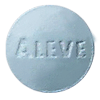 |
Aleve |
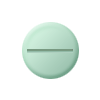 |
Arcoxia |
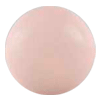 |
Cafergot |
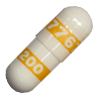 |
Celebrex |
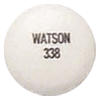 |
Diclofenac |
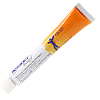 |
Diclofenac Topical Gel |
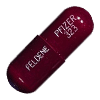 |
Feldene |
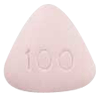 |
Imitrex |
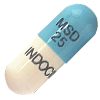 |
Indometacin |
 |
Lioresal |
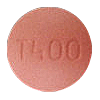 |
Lodine |
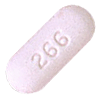 |
Maxalt |
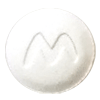 |
Mobic |
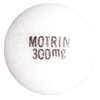 |
Motrin |
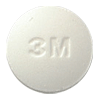 |
Norflex |
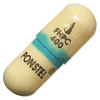 |
Ponstel |
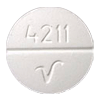 |
Robaxin |
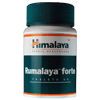 |
Rumalaya |
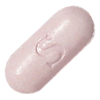 |
Skelaxin |
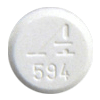 |
Tizanidine |
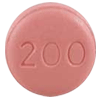 |
Topamax |
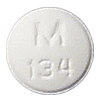 |
Toradol |
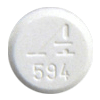 |
Zanaflex |

Contact Us
Please fill free to contact us anytime. You can use feedback form or the contact details below:
Website : painreliefers.com
+1 (760) 284-3222
+4420-3286-3820
Tags
2024 Overview Pain relief Over the counter A-Letter Pills B-Letter Pills C-Letter Pills D-Letter Pills E-Letter Pills F-Letter Pills G-Letter Pills H-Letter Pills I-Letter Pills J-Letter Pills K-Letter Pills L-Letter Pills M-Letter Pills N-Letter Pills O-Letter Pills P-Letter Pills R-Letter Pills S-Letter Pills T-Letter Pills U-Letter Pills V-Letter Pills X-Letter Pills Z-Letter Pills

About Us
PainReliefTabs has been created by us in early 2013. We do not sell anything! We only help people to find the information in the Internet and we believe that it's very important to provide users with realiable information nowadays. All brand names and trademarks are the properites of their respective owners.
Read out update note.
Subscribe
Enter your e-mail below and get notified on the latest blog posts.